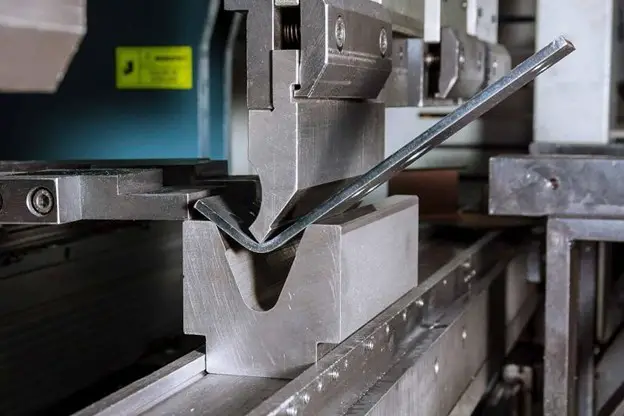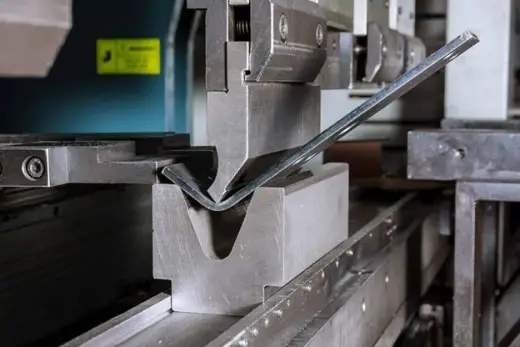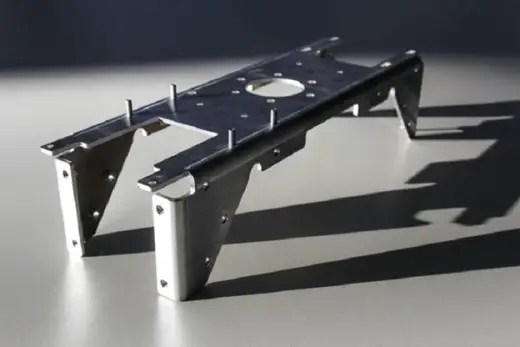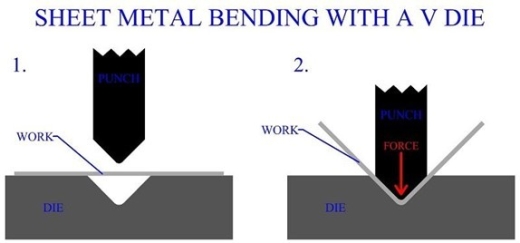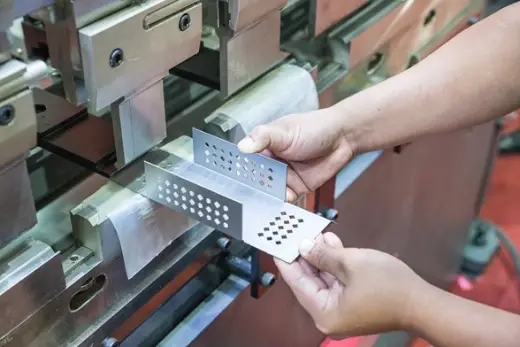Sheet metal bending techniques, Building business guide, Automotive and aircraft manufacturing
Sheet Metal Bending Techniques
25 Mar 2023
One of the simple processes to transform shapes into the desired shape is bending sheet metal from the raw form into the desired shape. Sheet metal bending is a forming process of sheet metal fabrication, involving an application of forces to sheet metal to produce the desired shape. Sheet metal bending is widely applicable at the industry level; for example, designing surfaces with different shapes for automotive and aircraft manufacturing industries. Here you will know the methods of sheet metal bending. You will also go through the ways to improve the stiffness of sheet metal.
Let’s start by highlighting the term “springback effect,” which will help to understand the content.
What Is Springback In Sheet Metal Bending?
Sheet metals are made with a high ability to be bent. They have ductility and malleability characteristics. Due to its ductility, in the bending process, there is a tendency for the bent sheet to try to straighten to regain its initial shape after releasing the bending forces. This tendency of sheet metal trying to regain its original shape is known as springback.
A reason for the springback effect is that the inner side of the material is compressed, and the outer side is pulled. The compressive strength of the material is stronger than tensile strength. The result is; it is difficult to permanently deform the inner side. The material will try to regain its former shape. It will always affect the dimensional accuracy of the finished part. Overcoming the springback effect; the sheet is bent beyond the required shape. The prediction of the final product after the effect is done, followed by designing appropriate tools which will help compensate for these effects.
How Is Sheet Metal Bent?
Sheet metal is bent by pressing a sheet metal between two dies: the upper die and lower die, made to form the pressed material into the desired profile. After pressing, the sheet will follow the shape the die has. Bending methods always depend on the purpose and the shape to be produced by the mechanism. Also, the sheet metal material will determine how to go through the process because some materials like steel plates can be tricky in the bending process.
Bending sheet metal can be achieved by applying different forms of equipment (press brakes). Press brakes are machines designed to bend sheet metal. These machines differ according to the mechanism involved in bending.
1. Mechanical press brakes.
These press brakes are operated via a motor inside the device which spins the flywheel at high speeds. The flywheel motion is transferred through a series of gears which will drive the ram up and down. An operator will control a flywheel through a clutch, which will set other parts into motion to bend the metal. These machines are suitable for flexibility, speed, and accuracy but are not suitable for air bending.
2. Pneumatic press brakes
These press brakes use an air compressor, which supplies airpower for the bending of sheet metals. These press brakes work best for bending small parts of sheet metal and are often used when the bending process needs less pressure.
3. Hydraulic press brakes.
Hydraulic power is used to apply the pressure that forces the ram down. They give the operator precise control over the bend through the cylinders which are more than one. The bend becomes more customizable and the accuracy is very high. They are incorporated with the latest technology within them and became the popular choice for sheet metal bending due to their precision in the activity.
4. Computer Numerically Controlled (CNC) press brakes.
This is a sheet and plate metal bending machine that uses either pneumatic or hydraulic power for pressing. It is numerically operated, with simple and user-friendly controls. The CNC press brakes are designed to bend sheet metals forming desired profiles. The CNC press brake consists of: a workbench where the workpieces are bent, the upper and lower dies mounted with press plate on the base, the ram where the upper dies are mounted and driven to press against the workpiece, and the automatic feeder which consistently feed the raw materials to the forming area.
Ways to Improve the Stiffness of Sheet Metal.
Flat sheet metal may not be strong enough to withstand some activities. But the sheets may be deformed by making structures on them, which increases the rigidity of the sheet metal.
- By Reinforcements.
These are extra materials such as brackets, plates added according to the areas you need to increase stiffness to provide the required rigidity of sheet metal. These are also known as stiffeners. These are in the form of patches added via methods, such as welding, gluing, soldering, and riveting to the sheet metal blanks to increase the stiffness by thickening the sheet metal.
- By flanging.
One of the importance of sheet metal bending is the improvement of the stiffness of sheet metal. Flanging is the form of bending by which the boundary (edge) of sheet metal is bent into an L shape. The L shape can be achieved by the V-bending method. One end of sheet metal is placed in the V-die punched to form the shape. Also can be achieved by the wipe bending (edge bending) method. The wiping die is used and a punch.
- By hemming.
Another way of bending, just like flanging, but here the boundary of sheet metal is bent to form a U shape. The U-bending method can be applied. Rotary benders can also be used in hemming because they can bend sharp corners less than 90 degrees with no springback effect, and they are more flexible even to be used to make U-channels with closed flanges.
- By punching holes and slots.
The areas on the metal with punched holes and slots become more tensile because they get stretched, so its tensile characteristic gives it more structural rigidity.
Applications of Sheet Metal Bending
Sheet metal bending is widely applicable from small industries’ machine shops, workshops, and heavy industries. Two industries: automotive production and the aerospace industry, may lead the application of sheet metal bending at a large scale. The following are areas where bending can be easily noticed.
a. Automotive production.
Vehicles are made with many curved surfaces. The bodies of vehicles are structured to be attractive and aesthetic pleasing by using curved sheets. Their curved shapes are made by the bending process. The bent surfaces of the vehicles are not only aesthetically pleasing but also for the safety matter: avoiding sharp edges.
b. Aerospace industry.
We know that any structure requiring a unique shape is most likely to undergo the bending process. Manufacturing of aircraft wings (aerofoil shaped), engine mount, and fuselages structures are accomplished by the bending process. Aluminum alloy and titanium alloy are commonly used by manufacturers to fashion passenger-and-military aircraft, because they are flexible and retain their shape.
c. Architecture.
The geometrical structures and the gentle curves (internal and external) are important in modern building construction to create flow. The roof sheets are made by the process of bending. Sheet metal bending is indispensable in modern technology and parametric design.
Sheet metal bending techniques Conclusion
The production of derivatives and special standard designs that are increasing will require the production of prototypes. The prototypes and the functionalization of components will require solutions with the flexibility of semi-finished products, and sheet metal will be a part of it. Sheet metals provide flexibility in design creativity resulting in more uses of sheet metal in different designs.
Comments on this Sheet Metal Bending Techniquest article are welcome.
Property Designs
Glasgow Architecture Designs – architectural selection below:
Comments / photos for the Sheet Metal Bending Techniques page welcome
